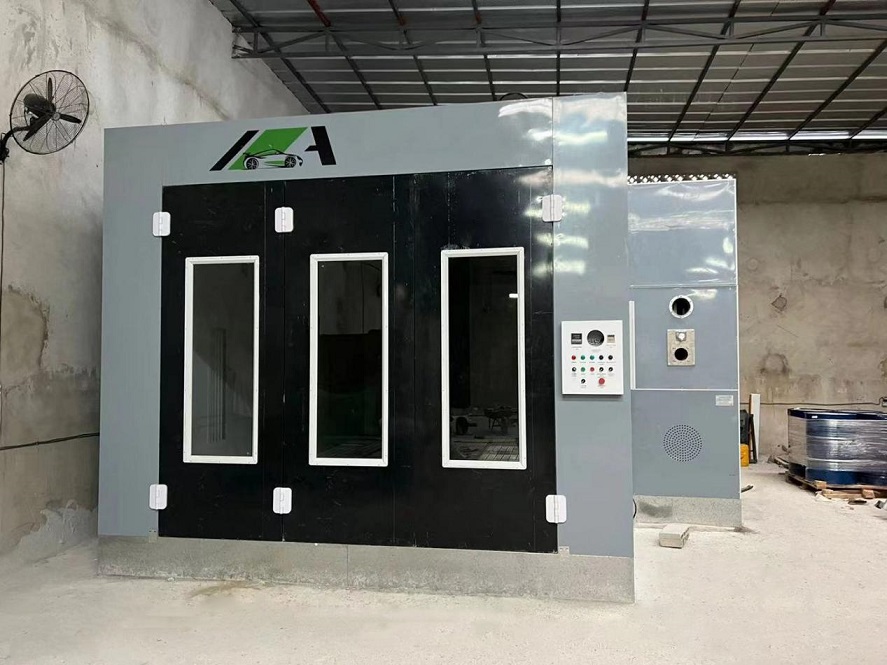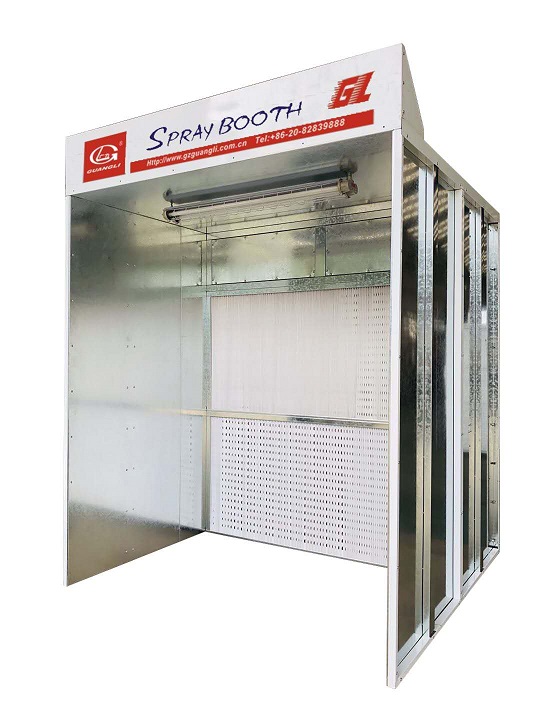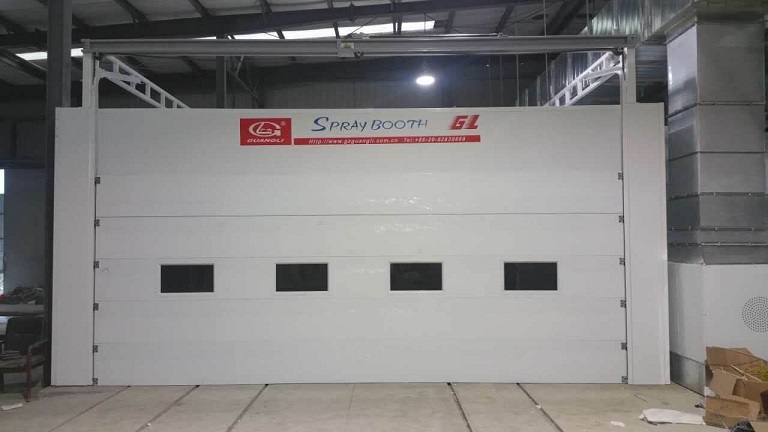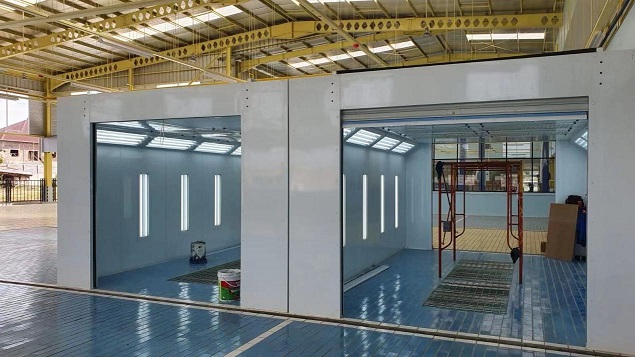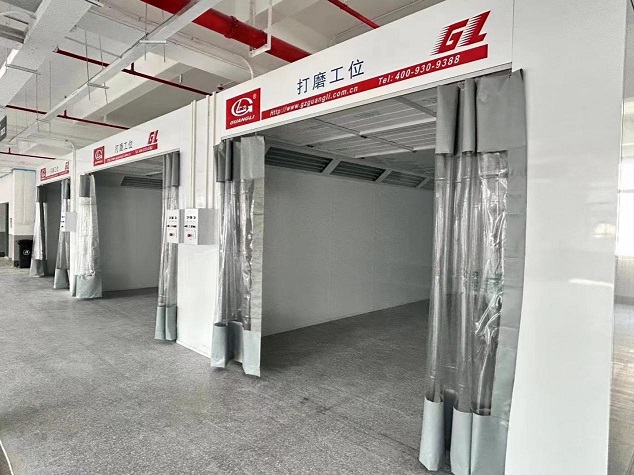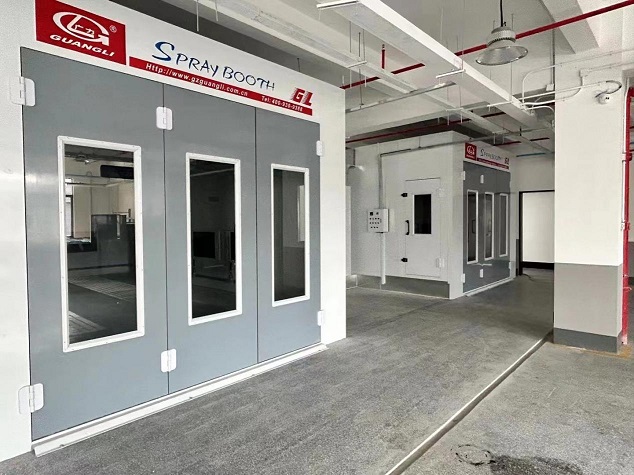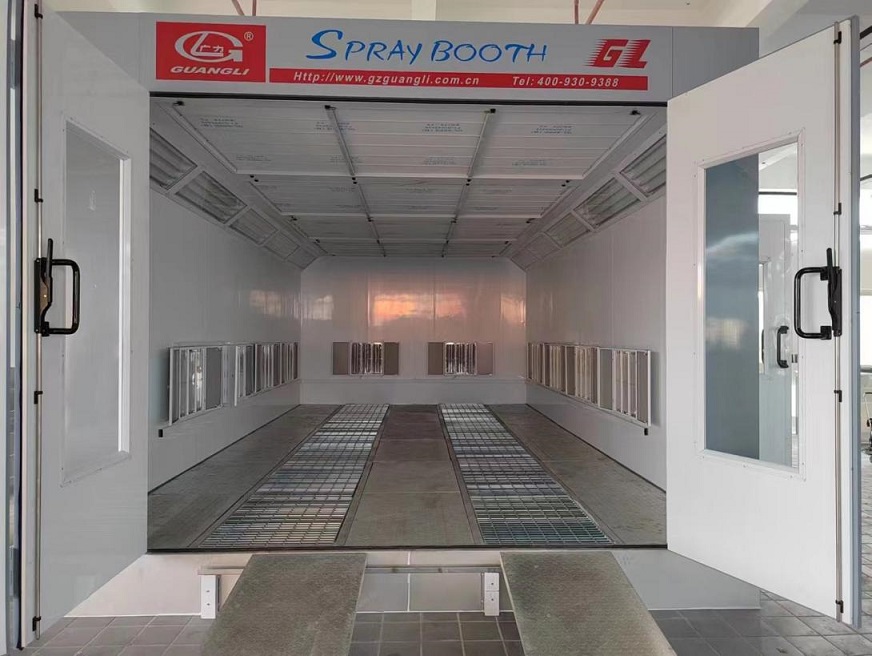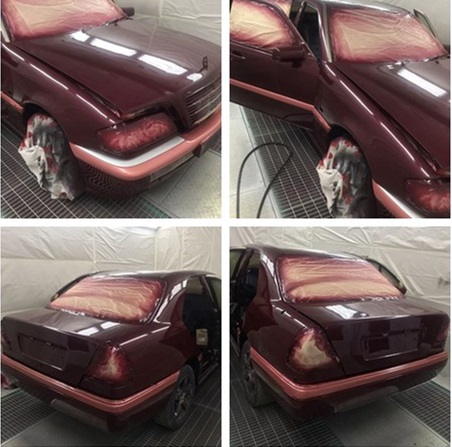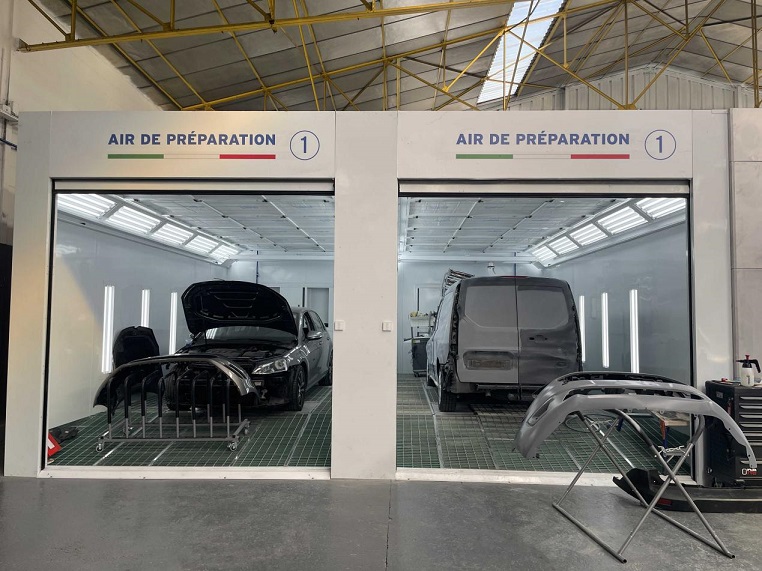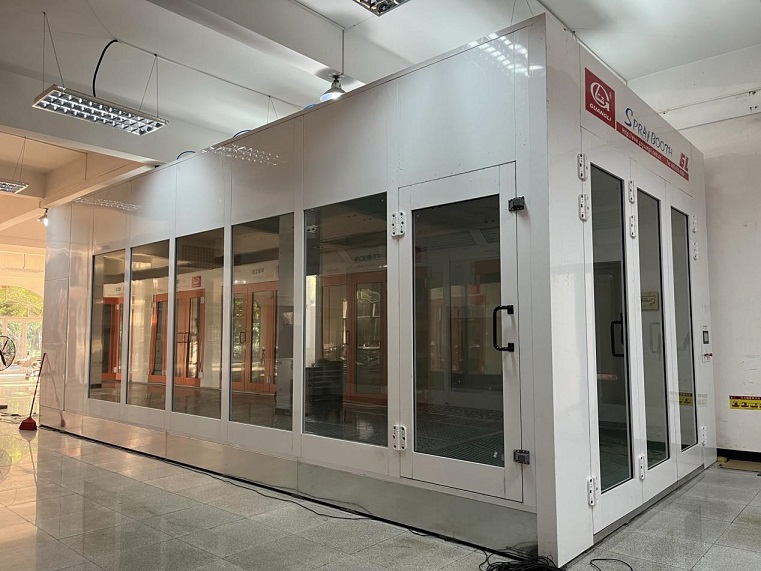Guangli as a full downdraft spray booth which has 3 big windows on the entrance door, one unit service door is equipped at the side to ensure the operator’s pass in and out. This is an automotive car spray booth, creating a bright, safety and comfortable working environment for all painting work.
High-end spray booth GL3000-A1
This type of cheap spray booth is purchased in December 2022 by our Croatia’s client, which indicated that the installation has been finished on February 2023.It is in an open air condition with the anti-rain room.
The using size for this car spray booth is 7.0×3.9×2.7M(LxWxH);
The basement is full of grilles,so that the spray booth with very good air exhaust;
The original Riello G20 burner makes a high heat productivity for the spray booth, assure that the temperature achieve to 60℃from 25℃in 15 minutes.
